On today’s podcast we’re talking about healthy bones. It’s important to keep your bones strong to prevent fractures and injuries. The choices you make today with your diet, exercise and other lifestyle factors will impact your bones today and in the future, as you age. You may be surprised to know that many of the things you do to support healthy bones are also good for your skin (and vice versa).
My guest today is Margie Bissinger. She is a physical therapist who has worked with clients in the prevention and treatment of osteoporosis for over 20 years. She is the author of Osteoporosis: An Exercise Guide, which has sold over 100,000 copies. Margie received a bachelor of science degree in physical therapy from the University of Pennsylvania and a master of science degree in Orthopedic Physical Therapy from Northwestern University.
In today’s interview, we talk about how to keep your bones strong and prevent osteoporosis. We discuss exercises, nutritional tips and other lifestyle factors to keep your bones healthy.
So please enjoy this interview…
To learn more about Margie Bissinger, go to her website here.
For more information on Happy Bones/Happy Life Program, click here.
TRANSCRIPTION:
Trevor: Hi there. I’m Dr. Trevor Cates. Welcome to The Spa Dr. Podcast. On today’s podcast we’re talking about your bones. It’s important to keep your bones strong to prevent fractures and injuries. The choices you make today with your diet, exercise, and other lifestyle factors will impact your bones not only today but as you age in the future. You may be surprised to know that many of the things that you do to support healthy bones are also good for your skin and vice versa. My guest today is Margie Bissinger. She is a physical therapist who has worked with clients in the prevention and treatment of osteoporosis for over 20 years. She is author of Osteoporosis: An Exercise Guide. On today’s podcast, we talk about how to keep your bones strong and prevent osteoporosis. We discuss exercises, nutritional tips, and other lifestyle factors to keep your bones healthy, so please enjoy this interview. Margie, it’s so great to have you on my podcast today.
Margie: Oh, thank you so much for inviting me. I’m really thrilled to be here. I love your work, and I love your book, and this is great.
Trevor: Oh, thank you. Thank you. Yeah, it’s great to have you. So today, we’re talking about osteoporosis, right? Before we dive into what we do about osteoporosis, let’s talk about how common it is, what it is, what it means to have osteoporosis.
Margie: Oh, absolutely. Well, osteoporosis, by definition, just means porous bones, and what it is that our bones are weak, thin, they don’t have the strength, and they’re more likely to break. So that’s the basic definition. It’s very common and people don’t realize how common it is 50% of women and 25% of men over 50 will experience a fracture related to osteoporosis in their lifetime. So it’s not something that we can just sort of say, “Oh, I’m not going to worry about it until later.” It’s something that can affect all of us.
Trevor: Yeah, and it’s something that can worsen as we age, but I’ve had patients that have been quite young with osteoporosis as well.
Margie: Absolutely. It’s a, it’s not, I don’t like to even call it a disease. It’s something that affects our entire lifetime. It’s sort of like a bank. We’re building bone when we’re young, and we built almost 85-90% of our skeleton before the age of 18, and then the rest until it peak bones around 30, so we’re building, building, building bone. A lot of our lifestyle, if people aren’t … you know, exercise, proper nutrition, it’s all what builds us strong healthy bone. However, a lot of people are sedentary today, a lot of people aren’t eating as they should, and so all those factors can contribute to really reduce bone at a very early age, so it’s something that I think affects all ages, and the more we can do when we’re younger, the better off … the better our bank account is as we get older and if we do lose some bone.
Trevor: Yeah, it’s really interesting. Bones are one of those things that I think a lot of people done think about until they break or until they have a bone mineral density that shows osteoporosis or osteopenia. Osteopenia-
Trevor: … is a step before osteoporosis where it’s starting to show changes in the bone on its way to osteoporosis, so in some people may have been diagnosed with osteopenia, and bone mineral density or a DEXA scan is the way you find out about osteoporosis and osteopenia, but I think what we’re talking about today is that we want to do things to protect our bones now before it becomes a problem, right?
Margie: Absolutely and the good news … similar to skin, I think there’s a lot of things that go together because there’s so much we can do to help our bones at all ages, whether we have osteoporosis, whether we don’t, whether we just want to build strong, healthy bones. Exactly.
Trevor: Yeah, and I do tend to notice that. My patients or the people that I see that have premature aging often are, seem to be at higher risk for osteoporosis, so maybe that’s hormonal components, nutritional issues. It could be a number of things, but I’ve just noticed that interesting corelation. LEt’s talk about, how do we prevent osteoporosis?
Margie: Okay, well, I look at it there’s really four areas that I work on with people because my background is I’m a physical therapist first, and then I became interested in nutrition as well. The first area is exercise. Exercise is so important, and so many people that I see were couch potatoes, and then they found out that they had to exercise because of their bones but in reality, as you know, exercise has so many benefits. But there’s really two exercises that can increase bone density, and that’s weight-bearing, so that’s walking, dancing, jogging, anything where the weight of gravity is going … or the body or weight is going through the bones against gravity, and that’s wonderful. Walking programs, dancing … as well as resistance exercises where the muscles actually contracting against a force, and it’s resistance That’s that muscle tugging on the bone say, “Hey we need more bone here.” So both of those have actually been shown to increase bone density, and so that’s one part of the exercise program, as well as balance, flexibility. I think that also, as we age, unfortunately, if we don’t practice balance, if we don’t use it, we lose it, and it’s something that … you know, people don’t usually just have a fracture, it’s usually from a fall. So the more they can practice balance as well, and posture.
I know even people that don’t have osteoporosis, especially today with cellphones, oh my goodness, as a physical therapist, it drives me crazy but we see this posture, and we see this posture all the time. Even with someone with osteoporosis, we certainly don’t want that to get worse, so doing posture exercises and being aware of the posture really makes a bit different. That’s one component in terms of the exercise.
Trevor: I think that, talking about falls, that is really important thing. And I think when we’re younger, we don’t think about falls, but as we get older we’re much more prone to fall, and then if we’ve got the osteopenia, osteoporosis, even if we don’t we’re more likely to fall and break a bone. What you’re talking about, about balance and stability like core strength and all of flexibility and all those sorts of things, that’s going to be really important to help prevent falls. So I’m glad that you talked about that too because it’s really the combination of the two is having osteoporosis and then something happens like a fall, then that’s really when osteoporosis is a big problem is that combination right?
Margie: It’s really true. The statistics are so awful. 24% of people who fracture their hip, die within a year after the fracture because of complications, and it’s something that can be prevented. I think there’s a lot of things. I think the balance exercises are huge, just practicing balance, even simple things like standing on one leg … and throughout life, I’m a huge fan to Tai Chi. It can make a tremendous difference in your balance, but also, mindfulness. All of us, we’re multitasking, we’re trying to do a million things, not living in the present, and we’re so much more likely to trip when we’re worried about what’s going to happen tomorrow versus just focusing on the present and what we’re doing. I see that a lot where people are just multitasking and trying to get so much done that they lose their balance or they trip because they don’t realize where they’re at. And so simple things like be more mindful can make a tremendous difference in preventing fractures and falls.
Trevor: With exercise … We’re talking a lot about how to prevent osteoporosis, but what about if somebody already has osteoporosis? Are there any exercises that they should or shouldn’t do?
Margie: That’s a great question, Trevor, because this is what I see a lot, and this was very upsetting to me early on when I first started working with osteoporosis, which was like 20 years ago. People were well-intentioned. They wanted to help themselves, they heard they had osteoporosis, and they just didn’t know where to turn for guidance, and so they just started doing all sorts of exercises. The one thing that I wanted to talk about that, I think, so important that a lot of people don’t know is, if you have osteoporosis, what you want to avoid is forward bending and rounding of the spine. I’ll show you, I actually brought an illustration of that because it really is something that I see all the time. I’ll go to senior centers, and they’re touching their toes and they’re doing windmills. What happens is, I’ll show you this picture because sometimes a picture says a thousand words. I think the words come out backwards on them, but this, can you see that okay? Can you see that okay?
Trevor: Yeah, and for the people that are just listening, maybe you can just talk them through what we’re seeing.
Margie: Oh, okay, yeah. All I’m showing you is a, this is showing a normal spine, but it’s the front of … we see the nice square shape here, and it’s the front of the spine that ends up having the osteoporosis, not in the back whereas if you feel the bumps on your back. It’s not there. It’s the front of the spine, and for those who can see what happens with osteoporosis is there no longer a square shape. They’re more like a wedge shape, and so it’s the front that happens, so when we bend forward and round, we’re putting all the force where it’s already weakened and where there’s already an issue. When we bend forward, we’re actually increasing significantly our risk of fractures. They did a study at Mayo Clinic, they did this back in the ’80s but they’ll never repeat it because how can you put someone at risk for fractures? They took people who had osteoporosis, and they looked at them over a six-year period of time doing different exercises. They looked at people doing extension, like going backwards, looking the back muscles, and they had a 16% fracture rate.
They looked at people doing flexion, forward bending, rounding, 89% fracture rate. We would never repeat that, but it makes sense because you’re fulcruming, you’re getting all the force in the front of the vertebrae where it’s already weakened. If you do have osteoporosis, it’s not that you can’t bend forward, but most people bend from the waist but where you should bend is more like a squat, from the hips and knees, and keeping … we all have an inward curve in our low back, so if you maintain that inward curve while you’re bending, then you’re not going to have any risk, and you’ll be able to do things. Similar to if they go to … I love Pilates, please do find an instructor who understands osteoporosis and just let them know that you can do all the extension postures, but you cannot do the flexion postures, the rounding postures, or the extreme also.
Extreme rotation and extreme side bending like in range also just puts a lot of torque on the spine. You can do the motions but don’t go to the extreme, and if you’re in class, certainly don’t have the instructor put any overpressure on you.
Trevor: Yeah, those are great points, and again this is for people who have osteoporosis that have been diagnosed with that. If you don’t have osteoporosis, it’s still okay to do the-
Margie: Oh, yeah, bend.
Trevor: … forward bending. And then also to clarify on the study that you mentioned, the extension, there was still some risk for a fracture, but it wasn’t … apparently it wasn’t too much of a concern. I mean, it’s more of the extreme movements [crosstalk 00:11:51].
Margie: Oh, actually, the control group had a 67% fracture rate-
Trevor: Oh, okay.
Margie: … so you were way better. [crosstalk 00:11:57]. You were way better doing the extension, just the extension, you were way better than … the extension was preventive actually, so the extension is wonderful, and that we always work on that. That’s one of the exercises that’s so beneficial because it’s attached to the muscles so all the extensor muscles in the back attach to the spine, and so when we pull on the spine, we say, “Hey, more bone should be produced here.” So I recommend people to resistance training and strength training at least twice a week. Never on consecutive days, but the research has been very positive on twice a week. And weightbearing, at least minimum three times a week, but five to seven times is better. The truth is anything people can do is better than nothing. So, that’s where we start, wherever you’re at, anything you’re going to add, any type of exercise is a huge improvement and will have major impact on your bones, as well as your overall health.
Trevor: There are certain people that are at a higher … that are more predisposed to developing osteoporosis than others. Do you want to explain what those are?
Margie: Oh, sure. There are a lot of risk factors. First of all, family history, if you have a family history. If your mother, your grandmother had osteoporosis, you’re at more risk. As well as if you fractured other bones in the past. So, if you had a fall and fractured other bones, even if your numbers aren’t that bad, that puts you at a much higher risk for future fractures. Also, a lot of medication. People who are on proton pump inhibitors or any of the acid blockers like the, let’s see, the Nexiums and the Prilosec, all of those are actually at more risk for osteoporosis, certain cancers are at more risk. Certain people with thyroid conditions, some of the medication. People who smoke are at more risk, as well as people who are sedentary, and people who really don’t have a great diet.
Trevor: Right. And also people that tend to be smaller framed, right?
Margie: Yes. Oh, yes. Asian also and Caucasian, you know, some of the ethnicities have higher risk, absolutely.
Trevor: Right. Yeah. So, it’s interesting to know about these risk factors, but still at the same time, just because you have some of those doesn’t mean you can’t change it, right?
Margie: Absolutely.
Trevor: You can start moving more. You can start … Because really a lot of it has to do with the pressure you’re putting on your bones. The more pressure you put on your bones, the stronger they can be, right?
Margie: Absolutely. Bones respond to the forces placed upon them. So for example, when we’re weightbearing, we’re getting forces through the bones and that causes more bone to be produced versus someone who’s in space or someone who’s on bedrest and they’re not getting weightbearing through the bones, they lose bone. And a study done on people who had problems with the lumbar discs and they were on bedrest, they lost almost 1% of their bone per week. So, that’s another situation were if you don’t use it, you really do lose it. But that’s what it is. It’s the forces that respond, that bone responds to, it’s the forces on it. So for young people, jumping, doing jumping jacks is amazing. Even for as we get older, jumping has been shown to increase bone density … as long as we don’t have osteoporosis, that we’re too frail that it’s too much for us. But, yes, absolutely.
Trevor: Yeah. And of course, it’s always good for people to talk with their doctor about what appropriate excise for them. If somebody has chronic pain or joint problems or different health issues, it’s good to talk to their doctor before starting doing jumping jacks or something that might-
Margie: Yes. I always recommend to everybody before, especially just listening to something, to speak to their physician before they start … or health care provider, before they start any new exercise program. The other thing is, as a physical therapist, people don’t realize that physical therapists can help you. So, a lot of people just say, “Oh, I have this shoulder pain,” and they’re just willing to live with it, where I would definitely get a consultation because that’s going to impede your activities. There’s so much that you can do, and especially even posture. Some people are just too tight. They really need to be worked on. There’s some times that you can’t do it yourself. Sometimes the tissue is just too tight or you need … So, I would highly recommend seeing a physical therapist if you do have an issue in terms of you know … and you’re just having pain or you feel that you’re not able to achieve what you want to achieve.
Trevor: Yeah. I think that’s a great point. A lot of times, people don’t think of a physical therapist until they get injured and if they’re recovering from an injury, that’s the only time to get physical therapy. But there are definitely other times that physical therapy could be really helpful. Do you want to expand on that a little bit more so people know more about what they could do?
Margie: Oh, sure. The truth is if any type of pain syndrome, any type of pain, even if you feel tight, even if you feel, “You know, I want to improve my posture, but I just can’t. I just am so tight,” you can see a physical therapist. For osteoporosis, that’s something that physical therapists work with and they can custom design a program for you that takes in all your considerations, if you have a knee problem, if you have a hip problem. So, yes [crosstalk 00:17:14].
Trevor: Physical therapy is so helpful and the sooner you see somebody I think, the better. When you start to have pain or an injury or something going on … A lot of times, if somebody is seeing their doctor for that condition, they can get a referral to a physical therapist and it’s covered by insurance and …
Margie: Oh, yes.
Trevor: So, that can be a great part of your healthcare team. Sometimes … doctors sometimes forget to mention physical therapists, so it’s good for everybody to know about physical therapists, so they can say, “Hey, what about physical therapy. Can you refer me to a physical therapist?” And a good one is key too.
Margie: That … you know, you are bringing up such great points. Because most doctors do not refer to physical therapy. I mean, orthopedists do of course, they work with knees. But if you’re seeing your general internist and you say your back hurts, they go ” Oh, just take a rest.” But then you ask, “Can I have a referral to a physical therapist?” Because they will say, “You know what? How are you sitting at work or how are you bending all day or what are you doing? You know what, you have an imbalance in your muscles.” There’s so many things that underlie. I’m big, and I know you are as well with root cause. What is the root cause of this back? Is it that you’re sitting and your computer is over here, so all day you’re in a torque position? Or what’s going on? So I think that you are absolutely right, ask the doctor, because many times … There’s two part to this. Because many times they won’t. And every physical therapist has their areas of strengths and weaknesses, so if you’re not … It’s not one size fits all.
So if you don’t seem to be having a positive relationship or you’re not getting better, you can try someone else who may specialize in that area or … You know, feel free in terms of … just you know, like everything else.
Trevor: What are some things you would say people should look for in great effort to find a physical therapist?
Margie: Oh I think you want them to spend time … a good evaluation. Explain what they are gonna do. And you have to feel … I’m big into vibes and I’m big into what are you feeling? Are you feeling open and expanded and feeling good, or does it make you feel contracted? So you want to have a good relationship. And I think someone that gives you a good evaluation, explains the goals, what you’re trying to do, so you work as a team. ‘Cause it is a complete team effort. It’s not like you go to a physical therapist and they’re gonna get you better. The two of you decide what you want to achieve, what are your goals … And you’re gonna have to do some work, so it’s definitely commitment on your part, and a commitment to the physical therapist, how they’re gonna lead you and where they’re gonna go.
So I think just … after the evaluation, you have a good understanding of what can be achieved, how long it will take, and what it entails. So I think … and how you feel. How are you feeling and are they giving you feedback? I think I would look for all those things.
Trevor: Perfect, thank you. I appreciate that. ‘Cause I think it’s … you know, finding that right person is good and we’ve talked about on the podcast about how … with exercise, if you find something that you enjoy doing, it’s so … It has so many more health benefits than if you’re forcing yourself to do exercise and you’re hating it. So if you’re working with a personal … sorry, physical therapist and you’re just miserable, that’s not gonna be the best experience for your healing journey. Now of course, if you’re in pain, maybe you’re not really gonna like any physical therapist for a while, until you get it under control. But I think it is good somebody good to work with.
Margie: That’s true. If you just had a total knee replacement or you’ve had surgery, it does hurt. And there’s nothing that can be done, so don’t blame the physical therapist for that. But I so agree with what you said, ’cause I’ll see people and they’re, “Oh, I’m on the treadmill, I can’t stand it, and I’m just doing it ’cause I have to.” Well what kind of chemicals are going through your brain? All negative. That, this isn’t good, this is torture … you need pleasure in your life. So I always tell people, we can find … or you can find something fun. I never want anyone to dislike their exercise. Just like their food, I want them to love it. So dancing for example. If you don’t feel like going on the treadmill or walking or whatever you’re doing, turn on the music. Get your favorite music and just go ahead and dance. It’s weight bearing, it’s wonderful. Or experiment with Tai Chi, with yoga, with whatever you like … or light aerobics, or see what is fun for you.
Do not just … and for that going through your head and your mind, “Oh, I have to do this and this is torture.” It’s not gonna be healthy. You’re not gonna … just like you said, you’re not gonna reap the benefits. So I’m a big believer in the pleasure principle, really in everything, ’cause we want pleasure, if we don’t find it in our exercise, we’re gonna try to find it other places, like food. But the point is, you can love exercise and I see this all the time where maybe people are afraid to try something new, and they do … and they’re a new person, they have more energy, they feel great, and it becomes a lifelong habit. So I agree, don’t you know … experiment, see what you like, you know there’s a lot of different options.
Trevor: Good. That’s fantastic. Let’s talk about stress and osteoporosis.
Margie: Oh sure.
Trevor: How does stress play a role?
Margie: It’s very interesting because I see people that come to me, and they’re so worried, are they doing the right exercises? And they’re so worried, are they eating the right foods? But they don’t realize that all this worry and stress is a risk factor as well. What happens is our stress hormone, cortisol, actually has been shown to reduce the osteoclast, which are the bone building cells. So the stress is a risk factor, just by itself it reduces the cells that build bones. So I’ve seen people who are very stressed out and my feeling is, we can’t change … a lot of us do have stress, we can’t change it. A lot of things we can’t change. But we can change how we respond and how we resilient we are. And I love … Jack Canfield has this … it goes E+R=O. So events plus response equals outcome. And it makes a big difference because again, you know things happen in our lives. But by doing relaxation exercises, by doing techniques on a daily basis, we can ride the waves of life. Like when something happens it’s not gonna push us over, we can be resilient.
And I find no matter how stressed out people are, they can start somewhere and really change their lives. And I feel almost that this is one of those life changing things. And I know for myself, I thought I was doing lots of great things. But I got a speeding ticket on the way to meditation. I was taking a ten week … an eight week meditation program and I got a speeding ticket the second class. And I realized I was great though. It was a knock in my head, that you are not practicing what you preach. And since that time, I’ve just made it an absolute priority and it changes your life because you can roll with things. So I found that people can … by learning different techniques, they can reduce their … how they respond to stress and their resilience so that they aren’t having the same cortisol, aren’t having the effect on their bones and they feel better. They’re lighter, they’re happier, it’s just a win-win situation.
Trevor: That’s great. You know I’m so glad that you’ve talked about this, because it is something … a lot of times people just blow off stress and I think for some people it might be a stretch to think that stress is related to our bones. But it is as you explained.
Margie: Absolutely.
Trevor: Let’s spend a few minutes talking about diet. And what are-
Margie: Sure.
Trevor: … foods that help your bones, what are the foods that we need to stay away from for healthy bones?
Margie: Okay great. And the funny thing is, it’s very similar, like the diet in your book? It’s very similar to a bone healthy diet. So in terms of what we want to stay away from … ’cause there are things that are really robbing our bones. Sugar, processed food, all the processed grain, you know all the fake food, is really reducing how we’re absorbing our minerals. And so that’s a big, big deal in terms of what we want to get rid of. We’re putting good nutrients into our bones, our bones need good nutrients. So the four biggest … I mean there’s a lot of things, and I think when you eat the rainbow, when you’re eating vegetables, and you’re eating you know healthy proteins, and I think when you’re eating a very well rounded healthy diet, you’re getting a lot of the minerals you need. However, for the bones in particular, there are a couple of ones that are absolutely key. So we need calcium, that’s very important. And I do like the people to get as much calcium as they can from their diet.
And I love the leafy greens like Bok Choy and Kale, and Collard Greens. They’re incredible, because besides just giving you calcium, it gives you so many other nutrients that are nourishing for our bones. What I do find though is a lot of people are taking too much calcium. You know they’re eating a healthy diet and then they see their doctor who puts them on 1200 milligrams of supplements and they’re getting too much. So often times I see … more often than not I’ll see someone who’s eating well, and then they’re also supplementing. And this is a situation where more isn’t better, because they’re actually shown there … it’s not 100% conclusive, but there’s been some studies on increase in cardiovascular problems, heart problems, increase in kidney stones with too much calcium. So if you’re getting it in your diet, you want to balance out, you don’t want more than the 1200 that’s the recommendation if you’re over 50. It’s a diet plus supplements.
Trevor: Right I think you know, when the recommendations are given about 1200 milligrams of calcium, it’s … that is total, and I think a lot of times people think, “Oh, that just means how much you should take in a supplement.” But like you’re … But most doctors are seeing patients, because the general public is not eating calcium rich foods, so they’re recommending 1200 milligrams of calcium, it’s for those people who don’t eat a healthy diet. But just so I just want to reiterate, yes I agree with you. Think about how much you’re getting in your diet and then supplement-
Margie: Exactly.
Trevor: … with that. And of course we don’t want to forget the other minerals and vitamins-
Margie: Right.
Trevor: … that are important for bone health. Yeah.
Margie: Right, ’cause I mean vitamin C-
Trevor: It’s not just not calcium.
Margie: The problem with calcium is calcium does not work alone. It needs vitamin D, vitamin K, and magnesium. Those are the four, the absolute top end. There’s a lot of other minerals, zinc and manganese, but I think the ones that, if people … for the listeners to started with, I think it’s important to get your vitamin D level checked, because vitamin D is essential … and I know you talk about this in your book, you have a great section in your book on vitamin D. But vitamin D is essential for the absorption of calcium and many people are low because we’re not in the sun and that’s where we’re getting … our food supply doesn’t have much vitamin D in it. So it’s something that we really do need to … if you haven’t had it, and most doctors I think today do the 25-Hydroxy vitamin D, so most people I think will get their vitamin D level, so you can know exactly what you’re getting. [crosstalk 00:29:06]
Trevor: And I think that that’s one of the vitamin D that we can have our blood levels tested with the 25-Hydroxy vitamin D. And I think this brings up, more of the point of, it’s good to work with a naturopathic doctor or a functional medicine doctor, to look at your diet plus what supplements you might need. To see where the gaps are. ‘Cause it’s not necessarily an easy thing to figure out on your own, you know to work with someone to figure out where those nutritional gaps are, I think it’s really important and … because we’re talking about amounts that might be in your food, plus the amounts in the supplements, and then also the right ratios of the calcium, magnesium, vitamin D, vitamin K, and the forms of all of those nutrients too. I mean we could spend another half hour talking about the forms of those different nutrients and what they should be, and we don’t have time to go into all of that today. But I think these are all important things to look at ’cause not all supplements are the same, and I just wanna reiterate that.
And it’s something I see a lot in my practice, is that people coming in and saying, “Oh I just picked this up at the grocery store, because my doctor told me I need to be taking calcium.” And I look at it and it’s just calcium and they’re not getting the other nutrients that we talked about and it’s calcium carbonate so they’re not even absorbing it. And so … I mean the list goes on and on. And I … this sort of opens this can of worms, but I would love to get back to food, talking about what people can do … you know, just everybody can do this on their own with food and you mentioned some of the foods that aren’t good for our bones, like I think you mentioned sugar and processed foods, also caffeine and alcohol too-
Margie: Absolutely.
Trevor: … can deplete our bodies of the nutrients we need, right?
Margie: Oh yes, definitely. And in terms of food … oh so back to the greens. I think for people to start, that’s one of the best ways to get a lot of bone nurturing nutrients, because you have calcium, you have magnesium, as well as so many other of the nutrients are in the green leafy vegetables. So those are my absolute favorite bone building, you know food. In terms of nuts and seeds are wonderful, magnesium is so important. And a lot of people … but I just want to go back to the doctor thing, I think you really brought up a good point. Because it is hard to do alone. And you do want help. And a lot of times and not … you know my whole family are traditional physicians and they don’t mean harm … and you know they’ll tell you take calcium and vitamin D, but they just don’t get into all the details. I think they don’t … and I don’t think they don’t realize, because rarely do people come to me, “Oh yes, I’m on magnesium, and I understand vitamin K.” They just don’t.
But the magnesium is something really important ’cause that’s what takes the calcium and the vitamin K into the bones. So in terms of magnesium, that’s in all sorts of nuts, pumpkin seeds, cacao, it’s … you know and you can take a bath, you can just take a bath and add some salt which is so relaxing, helps your stress as well. So magnesium is just wonderful. And then vitamin K, that’s also … there’s two parts. The leafy green, I mean there’s K1 and K2 and studies have been shown K1 can help reduce fractures. But you’ll get most of that if you’re eating greens. And I can’t stress enough how wonderful it is to eat greens and have greens as part of your diet. And they’ve done studies with the Nurse Health Study showing people reduce their risk of fractures when they were on greens. Again, unless someone’s on Coumadin or has a problem with blood clotting, because then you wouldn’t want to take the K. But K2 as well, not in that many foods.
There’s a food called Nattō that none of us eat ’cause it’s pretty horrible tasting. But it’s from Japan and based on significant improvement in bone density when people were eating the Nattō, which is very high in vitamin K2. But that’s were grass fed butter, or ghee, or the pasture … the eggs that are from the pasture can help with the K2 as well. But I think a well balanced diet where it’s mostly … you know maybe 20% is their healthy protein, and then the rest of the plate is healthy vegetables and that is really a bone healthy diet.
Trevor: Right. And I wanna point out that you’re talk … you were talking about calcium and healthy foods for bone, but you did not mention dairy. And I think it’s … you know and I appreciate that, but I want people to understand that there is a misconception, a misunderstanding that dairy is the food that you have to eat in order to get calcium. Which actually, there is a lot of calcium in dairy but we don’t actually absorb very much calcium from diary. And dairy also comes with a whole host of other issues that I talk about in my book … you know inflammation and common food allergies … those sorts of things.
Margie: Absolutely, yes, I completely agree. I personally am totally diary free. And I find some people can tolerate dairy and for those people it’s fine to have very high quality dairy. But diary should be organic if you’re having dairy, and it needs to be from the pasture as much as you can. You want grass fed, it’s a huge difference. But so many people, it causes inflammation and so it’s not right. A lot of people think, “Okay let me just have more milk. Let me just have more milk to increase the dairy, so that I get more calcium.” But no, I don’t … I agree with you there. I would rather they get it from the greens, from certain grains, from the nuts and seeds and almonds … there’s just so many other ways that you can get calcium. Sardines, some of the fish are fantastic. So I think there are a lot of other options and it really depends with dairy, ’cause as you said, it does come with a whole host of problems. And a lot of people, it really causes inflammation as you know. I’m sure you see that a lot in the skin.
Trevor: So okay great. I’m glad we were able to touch on that, ’cause that’s a question I get asked a lot. So well Margie, this has been really great, really great information today. I understand that you have a free gift for the listeners in our audience.
Margie: I do. What I wanted to do is really give them the information on exercise because it is confusing. So I did a masterclass, an exercise masterclass, where I really go in detail what exercises you should do, what you shouldn’t do, all about posture and how that can affect your bones, and a lot of tips. So that’s at the link, I guess it’s the link below? Or-
Trevor: Yeah, we’ll share the link. It’s happyboneshappylife.com/freegift but we’ll make sure we put that up on my website below your podcast interview. So people can go there and get that. ‘Cause you know when we’re doing a podcast, it’s hard for you to show us exercises.
Margie: Right, right.
Trevor: So I thought this was a great thing to share with people so they know what we’re talking about when we’re talking about exercise. So thank you for that, I really appreciate it.
Margie: Can I add one quick thing before … just quick, ’cause I don’t want to forget this. That it’s not just eating the food, as you hinted to before, it’s also absorbing it. So if people had digestive issues, and I see this all the time, they think they’re eating this healthy diet but they have many digestive issues and they’re not absorbing the nutrients. So I think, as you do, we need to look at … everyone needs to look at their digestion and make sure that they are absorbing the nutrients. Because so often I see this that, and people think they are trying very hard but yet they have some issues that are precluding them from really getting the nutrients. And even easy things. I tell everyone to take some deep breaths before they eat, and so that they’re calm and relaxed and then chew their food so that they can be present and this was they can absorb a lot more. ‘Cause if they’re running and they’re in fight or flight, digestion’s gonna be shut down. So something as simple as taking some deep breaths before they eat can make a tremendous difference.
Trevor: Great, thank you. I’m really glad you pointed that out. And I know we could spend a lot more time on osteoporosis-
Margie: Oh yeah.
Trevor: … ’cause we’re just touching, this is just the tip of the iceberg, but I wanted you to come on and talk about this. Because it is an important topic and bones and skin are related.
Margie: Absolutely.
Trevor: And we want to take care of your skin, but when you take care of your skin, you take care of your bones. Or you’re taking care of your bones, you’re taking care of your skin. Again so this is great information, thank you so much for coming on today.
Margie: Oh and thank you so much Trevor, I just really enjoyed this and continue all the good work that you’re doing in the field.
Trevor: Thank you. I hope you enjoyed this interview today with Margie [inaudible 00:38:00]. Great information on how protect your bones. To learn more about Margie and get the free gift she mentioned, just go to the spadoctor.com, go to the podcast page with her interview and you’ll find all the information and links there. While you’re there, I invite you to join the Spa Doctor community and you can also subscribe to the podcast on iTunes so you don’t miss any of our upcoming shows. If you haven’t done so already, I invite you to get your own customized skin report at theskinquiz.com, it’s free and takes just a few moments. Just go to theskinquiz.com and get information about what your skin is trying to tell you about your health. I also invite you to join me on social media, on Facebook, Pinterest, Twitter, Instagram, YouTube, and join the conversation. And I’ll see you next time on the Spa Doctor podcast.
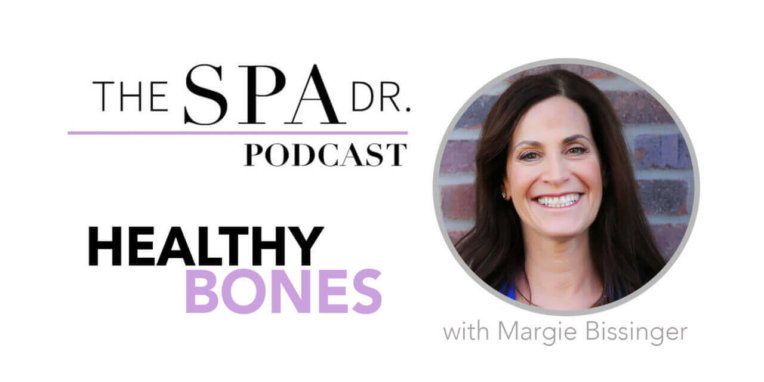
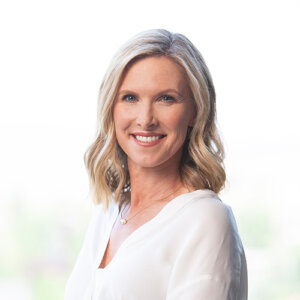
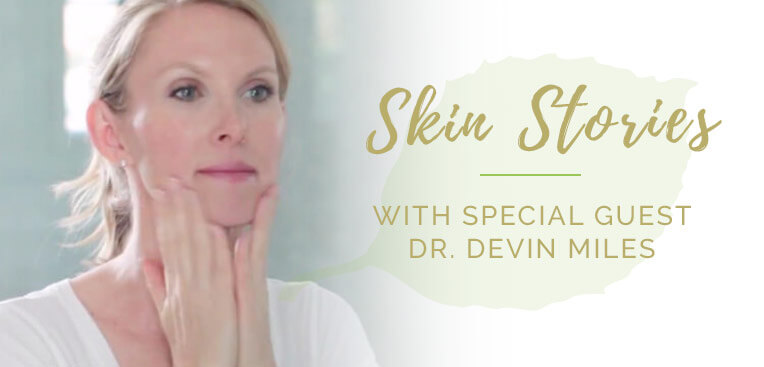
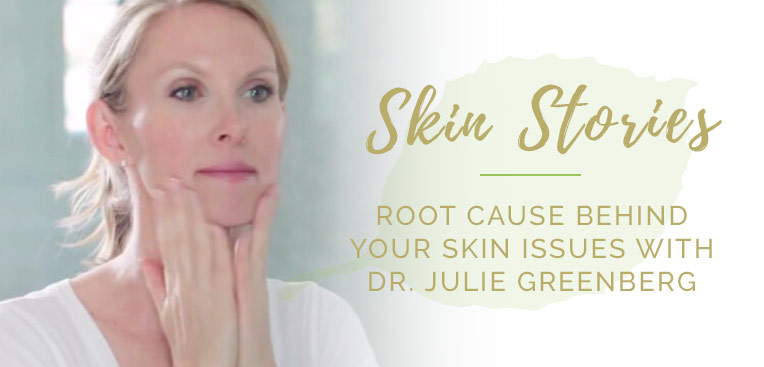
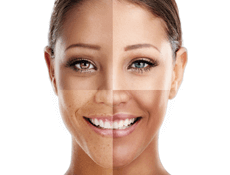
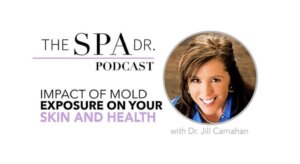
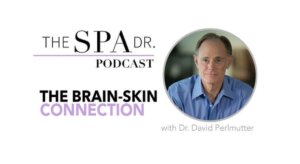
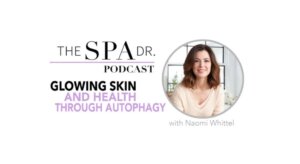
Reader Interactions